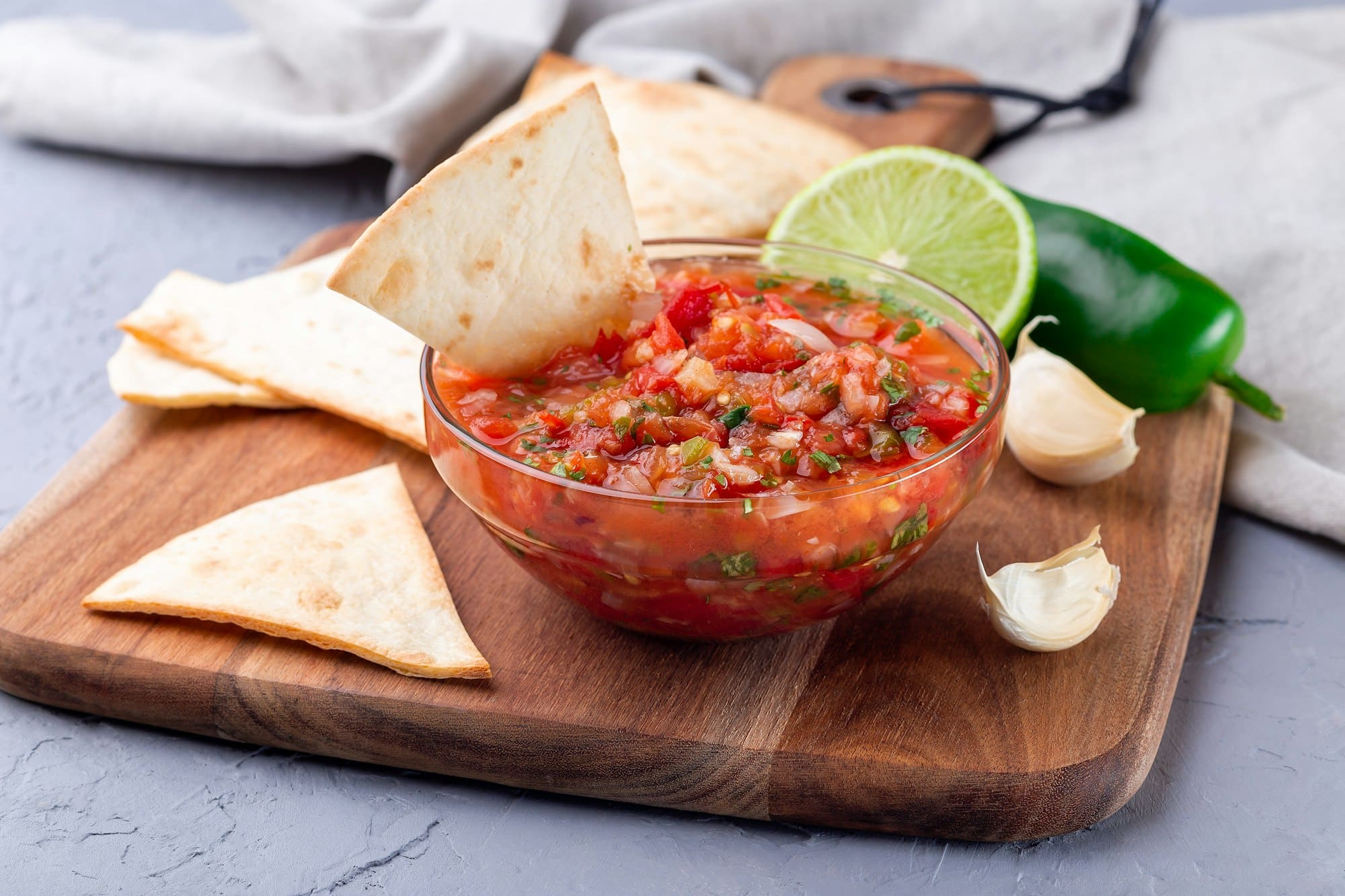Can You Craft a Spicy Mexican Salsa with Roasted Tomatillos and Chilies?

A rich, flavorful salsa can be the perfect addition to any Mexican dish you’re cooking, turning a simple meal into a culinary delight. The beauty of salsa is that it’s versatile, complementing a wide range of dishes from tacos to grilled chicken. It can even be used as a dipping sauce.
This article will guide you on how to create a classic Mexican salsa verde featuring roasted tomatillos and chiles, promising a unique flavor that’s both spicy and tangy. We’ll also explain the benefits of roasting and the essential ingredients you need to prepare this delicious salsa. So, let’s get into the delicious details.
A voir aussi : How to Prepare a Gourmet Wild Mushroom Risotto with a Drizzle of Truffle Oil?
The Significance of Roasting in Salsa Preparation
Roasting is a critical step in salsa preparation that can significantly elevate the flavors of your ingredients, especially when working with tomatillos and chiles.
Roasting these ingredients does more than just tenderize them. It caramelizes their natural sugars, adding depth to their flavor. The heat also breaks down the cell walls of the vegetables, unlocking flavors that are otherwise missed in raw versions.
A voir aussi : What’s the Best Way to Brew a Complex and Flavorful Ethiopian Coffee at Home?
When you take the time to roast your tomatillos and chiles, you enrich the overall taste of your salsa, adding a subtle smoky flavor that punctuates the tartness of the tomatillos and the heat of the chiles.
The Key Ingredients for Salsa Verde
Creating a delightful salsa verde requires a balance of various ingredients, each playing a crucial role in achieving the desired flavor and consistency.
First up are tomatillos. These small, green fruits, often mistaken for green tomatoes, are the backbone of salsa verde. They offer a perfect balance of tartness and sweetness that forms the base of the salsa.
Next are the chiles. For this recipe, we’ll use Hatch chiles, known for their earthy and subtle sweet flavor, and chile de arbol peppers, which bring a fiery kick to the salsa.
Garlic, onions, and oil also play essential roles in salsa preparation. Garlic adds a savory depth, onions contribute sweetness and texture, and oil helps to blend all the ingredients together, creating a smooth consistency.
Crafting Your Salsa: The Recipe Steps
Now that you understand the significance of roasting and the key ingredients needed, let’s break down the steps you need to follow to craft your spicy Mexican salsa verde.
Begin with roasting your tomatillos and chiles. Preheat your oven to 425°F (220°C), then toss the tomatillos, chiles, onion, and garlic in oil. Roast these ingredients for about 20 minutes, or until the tomatillos are tender and the chiles have a nice char on them.
Once the roasting is done, let the ingredients cool for some minutes. Then, remove the seeds from the chiles if you want to reduce the spiciness of your salsa.
Next, transfer the roasted ingredients into a blender or food processor. Add some salt to taste and blend until you achieve your desired consistency. For a chunkier salsa, pulse the blender a few times instead of blending continuously.
Let the salsa sit for at least 15 minutes to allow the flavors to meld together.
Making The Most of Your Salsa Verde
Once your salsa verde is prepared, it’s time to savor and enjoy its flavorful goodness.
This versatile sauce can enhance the taste of many dishes. You can use it as a topping for tacos, enchiladas, or grilled meats. You can also mix it into your scrambled eggs for a spicy twist or use it as a dipping sauce for tortilla chips.
Remember, the salsa gets even better after a day or two in the fridge as the ingredients have more time to meld together. Make sure to use it within a week, or freeze it for future use.
Without a doubt, salsa verde made from roasted tomatillos and chiles adds a delicious kick to your dishes. It’s a testament to the magic that can happen when simple ingredients are treated with care and attention.
A Quick Overview of Variations and Adjustments
Salsa verde is a versatile sauce, and this recipe can be easily tweaked to suit personal preferences or dietary needs. By understanding the role of each ingredient, you can make your own variations and still create a delicious result.
For those who prefer a spicier salsa, consider using serrano peppers instead of chile de arbol. Serranos pack more heat but also maintain a bright, crisp flavor that complements the tomatillos well.
If you find that your salsa is too tart, you can balance it out by adding a bit of lime juice or sugar. Lime juice can add a welcome zing, while sugar can soften the tartness of the tomatillos.
For a smokier flavor, you can swap out the Hatch chiles for green chile varieties that are known for their smoky undertones, such as chipotle or ancho peppers. Remember to adjust the quantity based on the heat level of the chiles to avoid making your salsa too hot.
If your salsa ends up too thick, you can thin it out with a bit of water or broth. If it’s too thin, you can add more roasted tomatillos until you reach the desired consistency.
There is also the option to roast your tomatillos and chiles on a baking sheet under the broiler instead of the oven. This method can produce a more pronounced char, adding an extra layer of flavor to your salsa.
Conclusion: The Joy of Homemade Salsa Verde
Crafting your own spicy Mexican salsa verde from roasted tomatillos and chiles may take a bit more time than opening a jar from the store, but the taste is incomparable. By roasting your tomatillos and chiles, using quality oil and fresh garlic cloves, and taking the time to balance your flavors, you’re creating a salsa that’s packed with complexity and depth.
Using our salsa recipe as your guide, you’ll be able to create a salsa that truly sings. The time, minutes spent roasting, blending, and adjusting flavors will be rewarded with each dip of the chip, each spoonful atop tacos or grilled meat.
Don’t forget that the beauty of making your own salsa is the ability to customize it to your liking. Experiment with different kinds of chiles, adjust the heat level, or try adding other herbs and spices. The possibilities are endless.
And the next time you sit down to enjoy your homemade tomatillo salsa, take a moment to appreciate the process that went into it. After all, the joy of cooking lies not just in the eating, but also in the making.
From the roasting of the tomatillos and chiles, to the blending of the ingredients in the food processor, to the final adjustment of flavors, you have crafted something truly special. Enjoy your homemade salsa verde, and revel in the knowledge that you’ve created a culinary delight from scratch.
